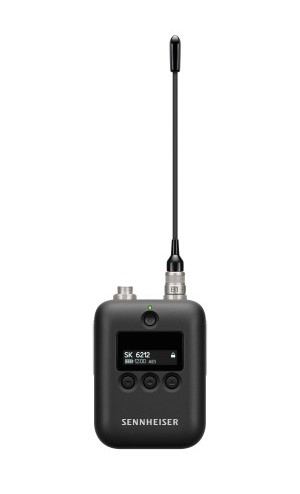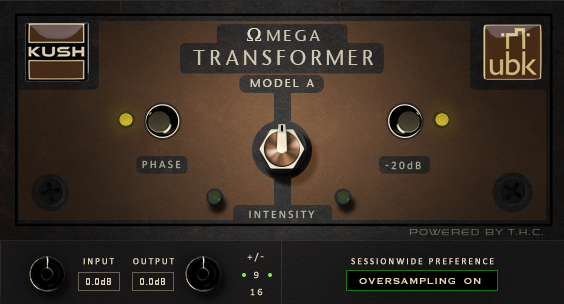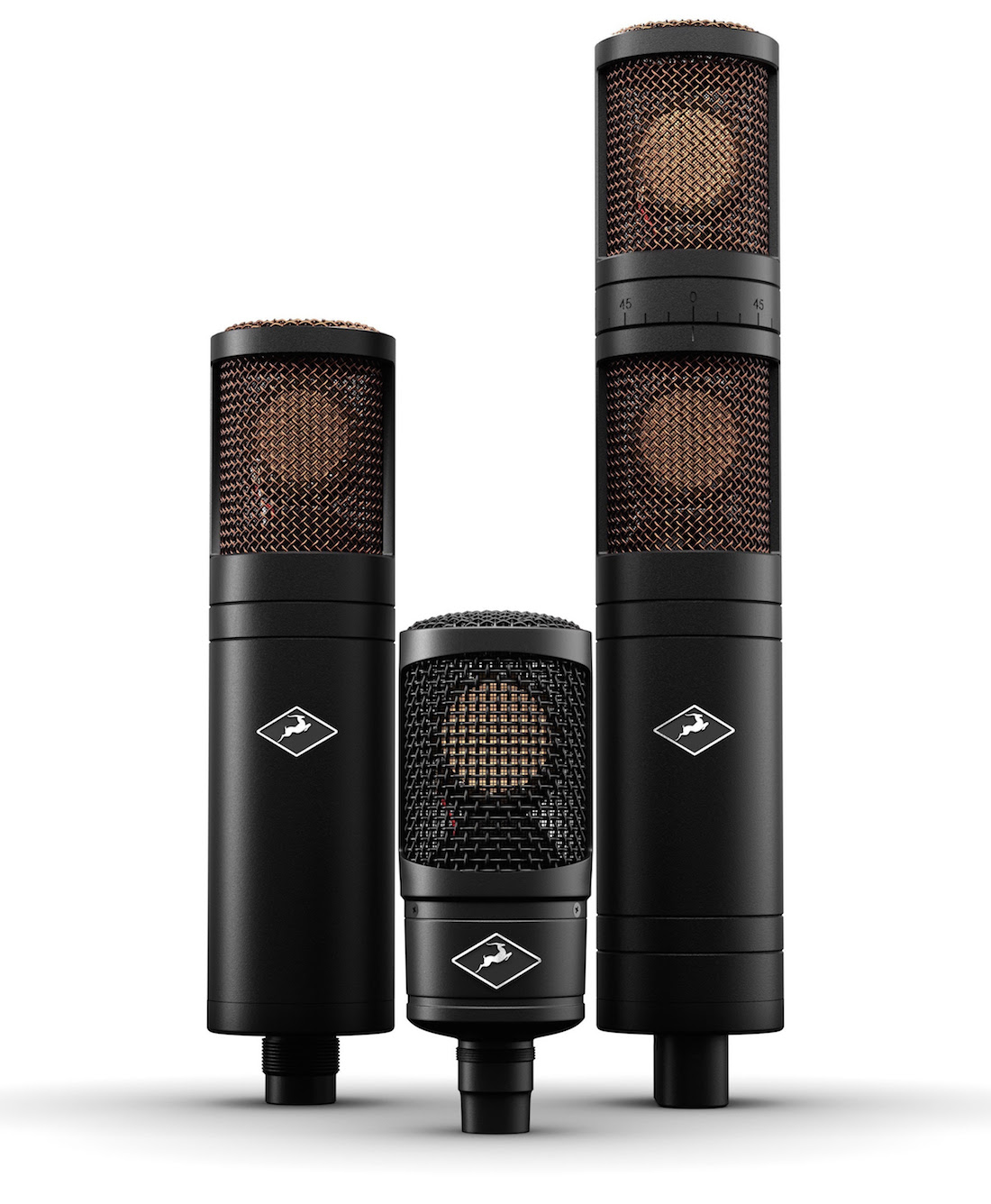New Gear Alert: Next Generation Edge Mics from Antelope, JUNO-DS76 by Roland, PreSonus Updates Studio One & More
Antelope Audio unveils all-new Edge modeling microphones.
Antelope Audio have unveiled the next evolution of their mic modeling technology. The new Edge series consists of three large-diaphragm condensers: the fixed cardioid pattern Edge Solo, the multi-pattern Edge Duo, and the dual-capsule Edge Quadro.
Edge Solo is the simplest of the three new mics. Connecting via a regular mono XLR cable, it houses a single large-diaphragm capsule with a fixed cardioid pickup pattern. It’s specifically designed to work hand-in-hand with Antelope’s mic modeling plugins to emulate some of the greatest cardioid pattern mics in history.
Edge Duo features a dual-membrane capsule with independent outputs, allowing the signal from each membrane to be individually processed and recombined. This not only means users can vary the polar pattern from within the plugin—even after recording—it also allows the Edge Duo to accurately emulate the characteristic pickup pattern and on/off-axis response of each mic for true multi-dimensional mic modeling.
Edge Quadro is a stereo/surround mic with two dual-membrane capsules and a rotating head. Delivering four channels for independent processing will allow for stereo techniques like M/S, X/Y, Blumlein, and even 3D sound. Users can select a different emulation and polar pattern for each head. The upper head can be rotated noiselessly even while the microphone is actively recording, delivering virtually limitless variations in tonality and stereo image.
Check out an introductory video to the new Edge series here; pricing is not yet available.
Roland announces the JUNO-DS76 synthesizer.

Continuing the legacy of the revered JUNO synthesizer, Roland adds the DS76 model to their JUNO-DS lineup.
The JUNO-DS76 is the latest addition to Roland’s popular JUNO-DS synthesizer lineup. Like all JUNO-DS models, the JUNO-DS76 features a lightweight design for easy travel, a wide variety of professional sounds for covering any music genre, and support for mobile performing with battery operation. Equipped with a 76-note synth-action keyboard, the JUNO-DS76 is an ideal choice for players who want to expand their musical range with multiple sounds split across the keyboard.
Filled with flexible features like ready-to-play sounds, onboard pads for audio playback, a pattern sequencer for creating original songs, and numerous others, the DS76 enables players to take on every creative scenario. For keyboardists who mostly play organ, synth, and other sounds, the 76-note keyboard provides increased playing comfort when different sounds are assigned to the upper and lower note ranges. The keys are also slightly longer than a standard synth keyboard, offering a playing feel that’s smooth and consistent, no matter where the key is pressed.
The JUNO-DS76 is priced at $899.99
PreSonus delivers major Studio One 4.1 update.
Studio One Professional’s unique Pipeline XT plugin lets you insert hardware processors into your Studio One session with automatic latency compensation. With Studio One Professional 4.1, Pipeline XT has received a complete user interface makeover, and has added several new features and improvements.
Tempo track editing is faster and better than ever. Now you can edit tempo with Studio One’s familiar automation tools for ramps, curves, and smoother adjustments. Switch between the default time-linear timebase and a new beat-linear timebase so that the grid no longer jumps under the mouse pointer. Narrow the Tempo Track display range to a musically meaningful range for improved tempo editing and visibility.
Studio One 4 eased the process of switching between other DAWs and Studio One by supporting AAF. With version 4.1’s new AAF export options, compatibility with other DAWs has been vastly improved. You can now embed WAV or AIFF audio files instead of referencing them, split stereo tracks (important for exporting to Pro Tools), and create copies of audio files in WAV or AIFF format, with a choice of resolution and sample rate.
Fully remote-controllable from any MIDI controller, Note Repeat has also been improved. Note Repeat now has its own section in the Record Panel where it can be activated/deactivated, and you can also select a repeat rate, and enable/disable Note Erase.
For complete information on the Studio One 4.1 update, click here; this update includes both Studio One 4 Artist and Studio One 4 Professional, and is free to registered users.
Sennheiser unveils the SK 6212 mini-bodypack for Digital 6000.

Sennheiser’s ultra-compact SK 6212 wireless transmitter will offer a comprehensive and not-so-small feature set.
The SK 6212 mini-transmitter is an ideal choice for any broadcast, theatre, musical, or live audio show that requires an inconspicuous, ultra-compact and lightweight package with the same reliable and spectrum-efficient transmission as that offered by the other Digital 6000 transmitters.
The SK 6212 uses the proprietary Sennheiser audio codec of Digital 6000 and Digital 9000. Like the bigger transmitters, it is intermodulation-free and extremely spectrum-efficient; frequencies can simply be placed in an equidistant grid. With comfortably rounded corners and edges, the mini-bodypack is about 63x47x20mm in size and a weight of approximately 112g—including the battery.
Users have full control over the SK 6212 via an OLED display and function buttons. As with all Digital 6000 transmitters, the SK 6212 can be IR sync’ed, saving time and hassle—especially in live environments. The flexible antenna is detachable and field replaceable. Special effort was put into ensuring a good level of moisture resistance for the SK 6212, which features an additional inner sealing.
The SK 6212 will be available in early 2019; pricing is not yet available.
Kush offers free upgrade for Omega Model A.

Kush’s Omega Model A sees critical updates, including a new oversampling feature, I/O gain controls, and more.
Model A imparts a vibe akin to plugging straight into an API console from 1976. Adding a hint of sparkle and sheen, it slowly breaks up into a gritty white cloud of antique saturation.
With the 1.0.6 upgrade, you can toggle the new oversampling setting on/off for every Omega A in your session; leave it off to save CPU while mixing, then turn it on just before bouncing to get all the benefits of Kush’s bespoke oversampling algorithm—with none of the CPU drag.
Omega A also now has the same input/output gain controls present in all new versions of Transformer plugins. Lastly, crucial bug fixes address an issue with fadeout during bounce on some systems, extreme CPU usage is no longer an issue on Windows, and delay compensation now works properly when bypassed.
Download the updated Model A for free here.
Please note: When you buy products through links on this page, we may earn an affiliate commission.








